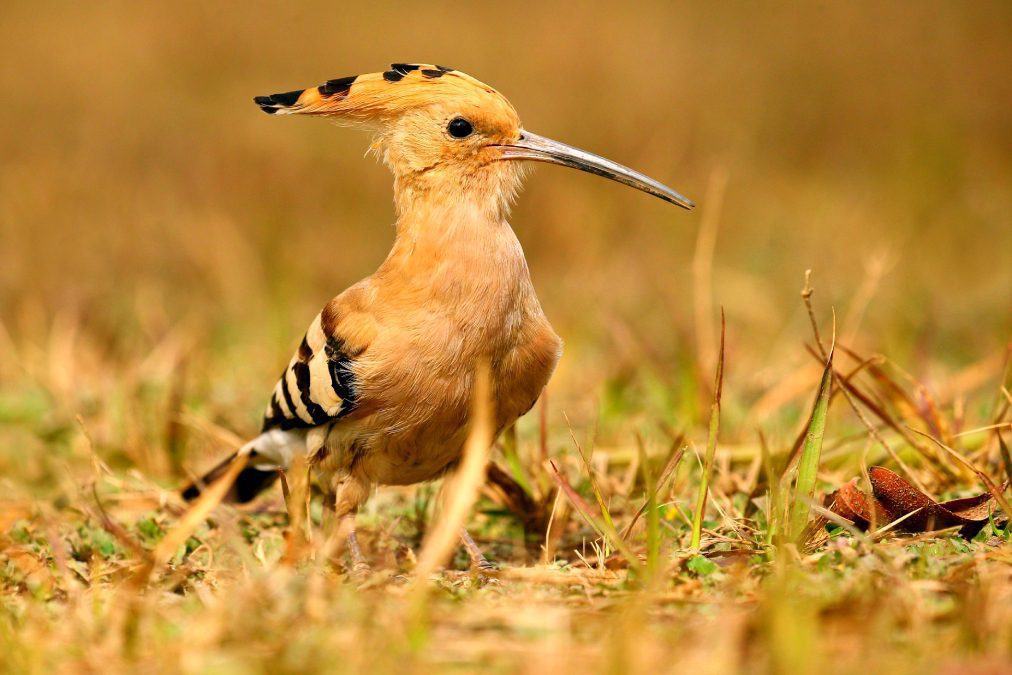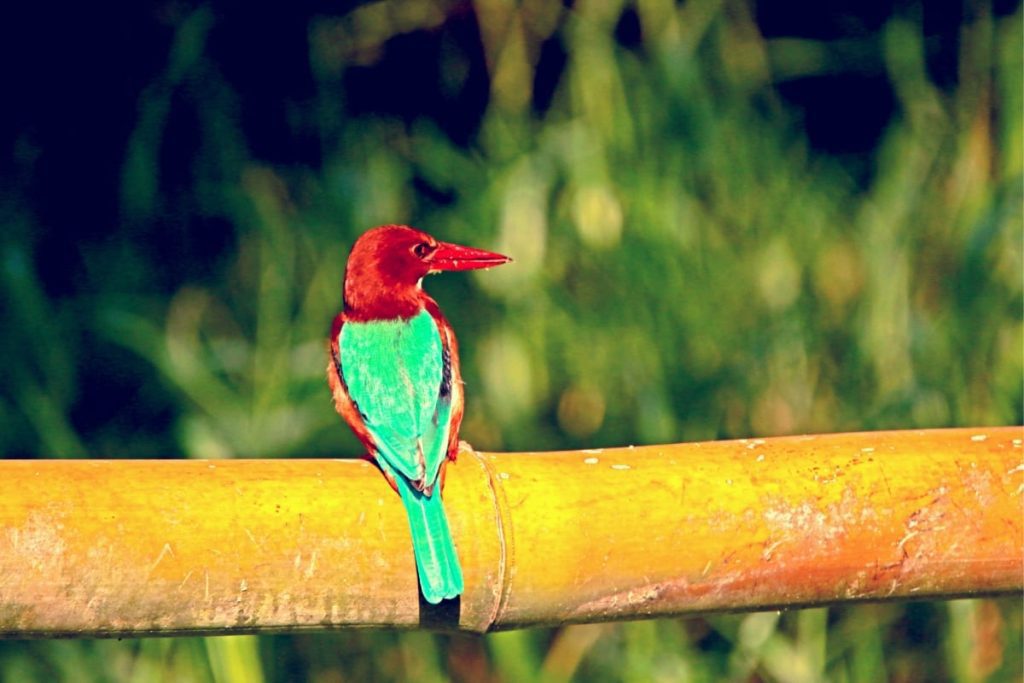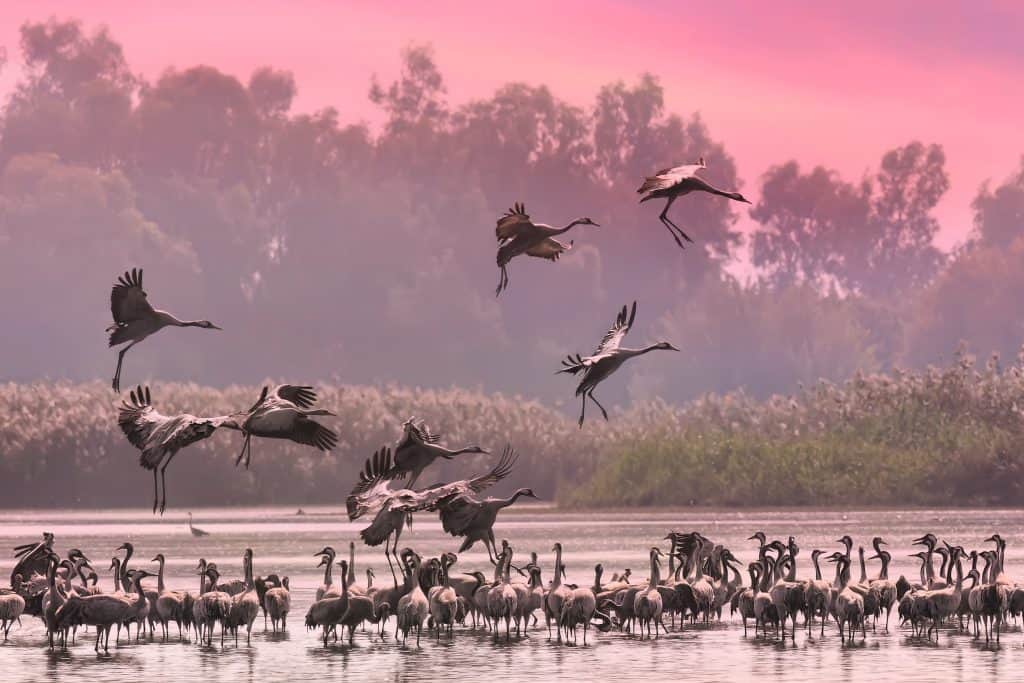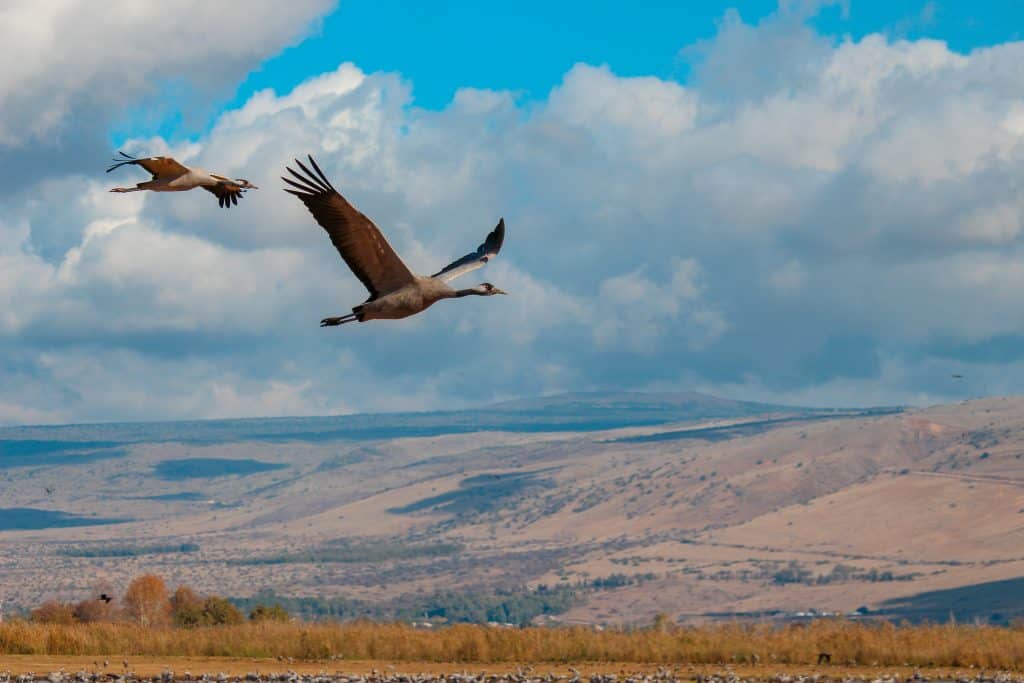So people from around the world come for Birdwatching in the Hula Valley. Israel is well known as one of the world’s best sites to enjoy migration. Millions of migrants from hundreds of species pass through Israel twice a year, making it one of the world’s busiest and most impressive flyways. Besides being a terrestrial bridge between the African continent and the Eurasian landmass; Israel is characterized by a wide range of habitats and as a result, presents rich biodiversity all year round.

Southern Israel is primarily arid, and its fascinating deserts are the northern tip of the breeding range of many African and near-eastern bird species. On the other hand, the north of Israel, with its high mountains and fertile green areas, is the southern tip for many birds of European and Asian origin. Also, Mt. Hermon in Israel’s extreme north is the tip of the vast Syrian mountain range and, as such, hosts some regional specialties that are hard to find anywhere else.

Furthermore, Israel’s mild winter hosts over 150 species of northern breeders that choose to pass the winter months here, including some scarce species.
Israel offers excellent birding year-round, with every season hosting its specialties.
Hula Valley

Birdwatching in the Hula Valley
The holy land hosts many interesting breeding and non-breeding resident species. So, birdwatching in the Hula Valley, common birds like the Yellow-vented Bulbul, Palestine Sunbird, Laughing Dove, Hoopoe; and Syrian Woodpecker can be found year-round in metropolitan areas.

Highly coveted near-eastern species like Black francolin, Long-billed Pipit, Syrian Serin, Graceful Prinia, and Clamorous Reed Warbler are easy to find most of the year in suitable habitats.
Israel’s diverse desert regions are home to regional specialties like Macqueen’s Bustard, Spotted, Black-bellied, Crowned and Lichtenstein’s Sandgrouse, Western Reef Heron, White-eyed Gull, Nubian Nightjar, the enigmatic Hume’s Tawny Owl; Namaqua Dove; 3 species of Wheatears: Blackstar; Streaked Scrub Warbler; Desert, bar-tailed and Hoopoe Larks; Arabian Warbler; Desert and Trumpeter finch and many more. Most of these species can all be found year-round if you know where to go.

But Why Do Birds Migrate?
When I am taking my guests to do some birdwatching in the Hula Valley, I like to tell them that the primary motivation for migration appears to be food; for example, some hummingbirds choose not to migrate if fed through the winter. Also, the longer northern summer days provide extended time for breeding birds to feed their young. This helps diurnal birds produce larger clutches than related non-migratory species in the tropics.
Hiking Agamon Ahula

As the days shorten in autumn, the birds return to warmer regions where the available food supply varies little with the season. These advantages offset the high stress, physical exertion costs, and other migration risks. Did you know that some bar-tailed godwits, Limosa lapponica have the longest known non-stop flight of any migrant? Flying 11,000 km from Alaska to their New Zealand non-breeding areas. Moreover, 55 percent of their body weight is stored as fat before migration to fuel this uninterrupted journey.







